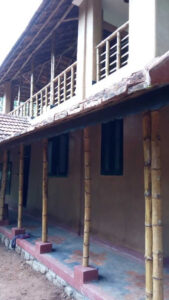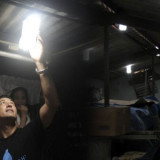Bamboo as a much-needed Eco-friendly Building Material
Bamboo is a much-loved alternative material for many ordinary household products, including flooring, culinary utensils and containers, bicycles, musical instruments, furniture, health and beauty products, and even apparel. People appreciate its durability, light weight, and bacterial resistance. The fact that bamboo is environmentally beneficial is what makes it so appealing to bamboo fans.
Bamboo grows ten times quicker than conventional trees and may reach a height of four feet in 24 hours, outpacing the growth and maturity rate of any other woody plant. Their flowering phases can last 60-120 years, and they can be gathered every 4-5 years, as opposed to the customary 25-70 years for other commercially cultivated trees.
Bamboo is naturally adapted to survive severe weather and natural calamities since the roots are maintained intact and are so broad. Even when some plants struggle to recover, fresh sprouts will appear in a few of days.
 With so many bamboo plants and such a rapid growth rate, it’s simple to see why it’s a highly sustainable crop. This is beneficial not just to the environment, but also to the bamboo farmer, who is searching for a low-cost, low-maintenance crop that requires little replanting and seeding.
With so many bamboo plants and such a rapid growth rate, it’s simple to see why it’s a highly sustainable crop. This is beneficial not just to the environment, but also to the bamboo farmer, who is searching for a low-cost, low-maintenance crop that requires little replanting and seeding.
- Vasantham by Sridhar Radhakrishnan
- Vasantham Balcony
Sridhar Radhakrishnan, an engineer from Kerala by profession and an environmentalist by passion, was certain that he did not want to remain in the residence that his family had left him. In Valiyavila, on the outskirts of town, he discovered an empty 21-cent property snuggled amongst rubber estates.
 He enlisted the help of PB Sajan, an architect at the Centre of Science and Technology for Rural Development, to turn his vision into a reality, resulting in the construction of Vasantham. His mandate to the architect was simple: build a house out of recyclable materials that can be recycled if it is destroyed.
He enlisted the help of PB Sajan, an architect at the Centre of Science and Technology for Rural Development, to turn his vision into a reality, resulting in the construction of Vasantham. His mandate to the architect was simple: build a house out of recyclable materials that can be recycled if it is destroyed.
The home’s parapet and first-floor roofing were built of bamboo, and bamboo rods served as pillars to carry the ceilings. The bamboo was obtained from a tribal group.
In a society where cement is the first-thought-of material for every construction project, Sridhar’s home exemplifies how we may return to our green traditional techniques while adding a modern twist.
Another brilliant example of sustainable development is the Uravu Indigenous Science & Technology Study Centre, located in Wayanad, Kerala. Uravu is a non-profit bamboo-based development organisation dedicated to rural prosperity through long-term solutions.
Uravu, founded in 1996, collaborates with individuals, governments, and enterprises to promote projects with the primary goal of promoting sustainable development and implementing specialized end-to-end programmes in the bamboo industry. The CIPRA Solidarity Award for Sustainable Tourism was presented to the Uravu Bamboo Grove Resort in 2018.
Check out some instances of brilliant sustainable planning in Kerala –
Additionally, the Kerala State Bamboo Mission (KSBM) was established under the Department of Industries and Commerce and is based at the Kerala Bureau of Industrial Promotion. The mission’s general objective is to mobilise the state’s scattered resources and take a structured approach to revitalising the bamboo sector by helping to promote value addition, increasing employment and income, and fighting poverty through a series of planned approaches.
Such intervention-based strategies are projected to generate revenue at multiple levels, particularly among women, and to improve the quality of life of artisans/craftspeople, so adding to the sector’s overall development.

































